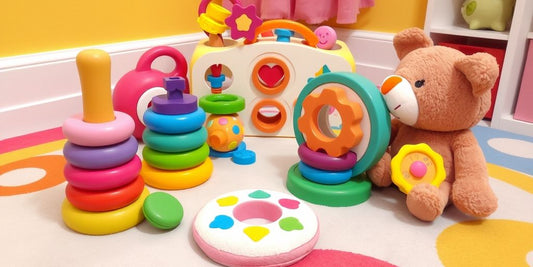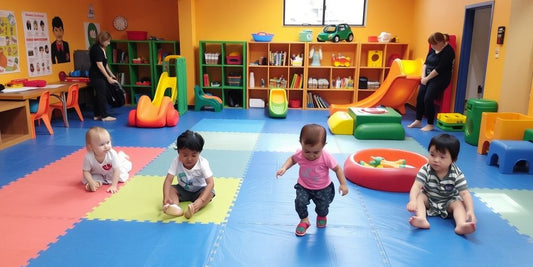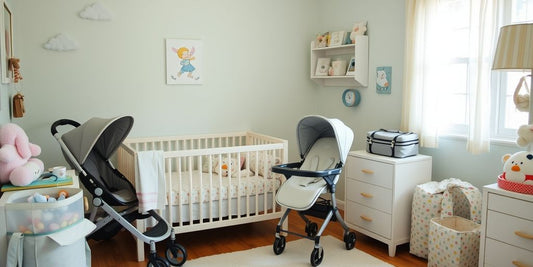Creating a safe play area for kids is super important. Parents need to know how to make playgrounds safe so their kids can have fun without getting hurt. This guide will give you tips on inspecting playground equipment, choosing the right surfaces, supervising kids, teaching safe play, protecting from environmental hazards, preventing bullying, and being ready for emergencies.
Key Takeaways
- Always check playground equipment for any damage or wear and tear.
- Choose soft ground coverings like mulch or rubber to cushion falls.
- Keep a close eye on kids while they play to ensure they use equipment safely.
- Teach kids how to use playground equipment properly and share with others.
- Be prepared for emergencies by knowing basic first aid and having a plan.
Inspecting Playground Equipment for Safety
Ensuring the safety of playground equipment is crucial for preventing injuries and providing a secure environment for children to play. Here are some essential tips for inspecting playground equipment:
Checking for Structural Integrity
Before allowing children to play, inspect the equipment for any defects. Look for rusted or broken metal, cracks in plastic, splintering wood, and sharp edges. Make sure all parts are securely fastened and there are no open metal S hooks, especially on swings.
Identifying Hazardous Materials
Avoid playgrounds with surfaces made of asphalt, concrete, gravel, dirt, or grass, as these materials are too firm to absorb shocks from falls. Instead, opt for surfaces like mulch, shredded rubber, wood chips, sand, or pea gravel, which should be at least a foot deep and extend six feet from the edge of the equipment.
Ensuring Proper Installation
Follow the manufacturer's instructions for proper installation and spacing. Equipment taller than 30 inches should be at least nine feet apart. Ensure that handrails and guardrails are in place to prevent falls.
Regular Maintenance Tips
Regularly inspect the equipment for any signs of wear and tear, such as loosening, rust, or corrosion. Heavy use and weather conditions like rain, snow, and high winds can damage equipment. Report any defects to the appropriate authorities to keep the playground safe for everyone.
Choosing the Right Playground Surface
Benefits of Soft Surfaces
The type of surface on the playground is the most important factor in the number and severity of injuries due to falls. Softer surfaces can greatly reduce the risk of serious injuries. Materials like wood mulch, shredded tires, and sand are excellent choices. Hard surfaces like asphalt and concrete should be avoided as they can cause severe injuries.
Types of Safe Ground Coverings
There are several types of safe ground coverings to consider:
- Solid rubber surface: Durable and provides excellent shock absorption.
- Artificial grass or turf: Looks natural and is soft underfoot.
- Play sand and pea gravel: Affordable and easy to maintain.
- Rubber mulch: Made from recycled tires, it's eco-friendly and safe.
- Engineered wood fiber (EWF): Provides good cushioning and is cost-effective.
Maintaining Playground Surfaces
Regular maintenance is key to ensuring playground surfaces remain safe. Check for wear and tear, and replenish materials like sand or mulch as needed. Proper maintenance can extend the life of the playground surface and keep it safe for children.
A well-maintained playground surface not only ensures safety but also enhances the overall play experience for children.
Supervising Children During Play

Importance of Active Supervision
Keeping children safe is a top priority for all parents. Active supervision is the most effective strategy for creating a safe play environment. Always keep your eyes on the kids, especially the younger ones, as they may not be aware of potential dangers. If multiple adults are present, divide the responsibilities to ensure every child is being watched.
Age-Appropriate Equipment Use
Make sure children use equipment that is suitable for their age. What is safe for an older child might not be safe for a younger one. Always check the playground equipment and guide children to use it properly. For example, kids should sit on swings, not stand or kneel.
Setting and Enforcing Playground Rules
Establish clear playground rules and make sure children understand them. Some important rules include:
- No roughhousing
- Take turns on equipment
- Respect others' property
- Clean up after yourself
By setting these rules, you help create a safe and enjoyable environment for everyone.
Remember, supervising children during play is not just about watching them; it's about actively engaging and ensuring they follow safety guidelines.
Teaching Children Safe Play Practices

Understanding Equipment Usage
Teaching kids how to use playground equipment properly is crucial. They should know to sit on swings, not stand or kneel. Always slide feet-first and avoid climbing outside guardrails. This helps prevent accidents and ensures everyone has fun safely.
Promoting Turn-Taking and Sharing
Playgrounds can get crowded, and it's important for children to learn to wait their turn. Encourage them to share equipment and take turns. This not only keeps the playground safe but also teaches valuable social skills.
Encouraging Respectful Behavior
Respectful behavior is key to a safe play environment. Teach kids to avoid pushing or roughhousing. They should be mindful of others, ensuring everyone can enjoy the playground without getting hurt.
Remember, playgrounds promote safe and fun outdoor play. By teaching kids these practices, we can help create a safer and more enjoyable environment for everyone.
Protecting Children from Environmental Hazards
Sun Safety and Hydration
Ensuring your child is protected from the sun is crucial. Always apply sunscreen with at least SPF 30 before heading outdoors. Encourage kids to wear hats and sunglasses to shield their eyes and face. Make sure they drink plenty of water to stay hydrated, especially on hot days.
Weather-Related Precautions
Check the weather forecast before going out to play. Avoid playgrounds during extreme weather conditions like thunderstorms or heatwaves. If you hear thunder, it's best to head indoors immediately. Dress children in appropriate clothing for the weather to keep them comfortable and safe.
Avoiding Dangerous Areas
Teach children to stay away from potentially hazardous areas. This includes avoiding bodies of water, steep hills, and areas with heavy traffic. Make sure they understand the importance of not picking up or playing with potentially dangerous litter, such as broken glass or sharp objects.
Keeping an eye on environmental hazards can significantly reduce the risk of accidents and injuries during playtime.
Preventing and Addressing Playground Bullying
Recognizing Signs of Bullying
Bullying can happen anywhere, even on the playground. It's important to recognize the signs early. Look for changes in your child's behavior, such as avoiding the playground, becoming withdrawn, or showing unexplained injuries. These could be indicators that something is wrong.
Strategies to Prevent Bullying
Preventing bullying starts with creating a positive environment. Here are some strategies:
- Promote kindness and respect: Teach children to be kind and respectful to others.
- Set clear rules: Make sure children understand that bullying is not acceptable.
- Encourage open communication: Let children know they can talk to you about anything.
- Supervise play: Keep an eye on children while they play to intervene if necessary.
Steps to Take if Bullying Occurs
If bullying does happen, it's crucial to address it promptly. Here are the steps you can take:
- Listen to your child: Make sure they feel heard and supported.
- Document the incidents: Keep a record of what happened, including dates and details.
- Talk to the other parents: Discuss the situation with the parents of the other child involved.
- Involve the community: Sometimes, it helps to involve teachers or community leaders to address the issue.
- Seek professional help: If the bullying continues, consider seeking help from a counselor or psychologist.
Bullying can ruin a good time for everyone at the playground, and parents need to make sure their children know it’s unacceptable behavior.
By taking these steps, you can help ensure that the playground remains a safe and fun place for all children.
Emergency Preparedness and First Aid
Basic First Aid for Common Injuries
Knowing basic first aid can make a big difference in an emergency. First aid training is essential for parents and caregivers. Here are some common injuries and how to handle them:
- Cuts and Scrapes: Clean the wound with water, apply an antiseptic, and cover with a bandage.
- Burns: Cool the burn under running water for at least 10 minutes, then cover with a sterile dressing.
- Sprains: Use the R.I.C.E. method - Rest, Ice, Compression, and Elevation.
- Choking: Perform the Heimlich maneuver if the child is choking and cannot breathe.
Creating an Emergency Action Plan
Having an emergency action plan is crucial. Teach your children about environmental emergencies like earthquakes, hurricanes, and floods. Make sure they know:
- How to contact emergency services.
- Where to find the first aid kit and fire extinguisher.
- The family meeting spot in case of evacuation.
- Basic contact information, such as parents' names, home address, and phone number.
When to Seek Professional Medical Help
It's important to know when to seek professional medical help. If a child has difficulty breathing, severe bleeding, or is unresponsive, call emergency services immediately. For less severe injuries, consult your pediatrician. Always err on the side of caution when it comes to your child's health.
Emphasize safety. Allow children to express their concerns and ask questions. Reassure them and be honest in a developmentally appropriate way.
Conclusion
Creating a safe play area for your children is not just about picking the right equipment but also about regular checks and teaching your kids how to play safely. By following these tips, you can help ensure that your child has a fun and injury-free time at the playground. Remember, your vigilance and guidance are key to making playtime both enjoyable and safe. So, keep an eye out, stay informed, and let your kids enjoy their playtime to the fullest!
Frequently Asked Questions
How often should playground equipment be inspected?
Playground equipment should be inspected regularly, ideally once a month, to ensure everything is in good condition and safe for children to use.
What are the best materials for playground surfaces?
Soft materials like mulch, sand, and shredded rubber are great for playground surfaces because they help absorb the impact from falls and reduce the risk of injury.
Why is active supervision important at playgrounds?
Active supervision helps prevent accidents by ensuring children use the equipment correctly and stay safe while playing. It also allows adults to intervene quickly if something goes wrong.
How can I teach my child to play safely on playground equipment?
Teach your child the proper way to use each piece of equipment and explain the importance of taking turns and sharing with others. Encourage them to play respectfully and be mindful of younger kids.
What should I do if I see bullying at the playground?
If you see bullying, intervene immediately to stop it. Speak to the children involved and, if necessary, inform their parents or guardians. It's important to create a safe and friendly environment for everyone.
When should I seek professional medical help for a playground injury?
Seek professional medical help if the injury is severe, such as broken bones, deep cuts, or head injuries. For minor injuries like scrapes and bruises, basic first aid should be sufficient.









